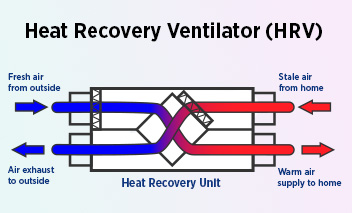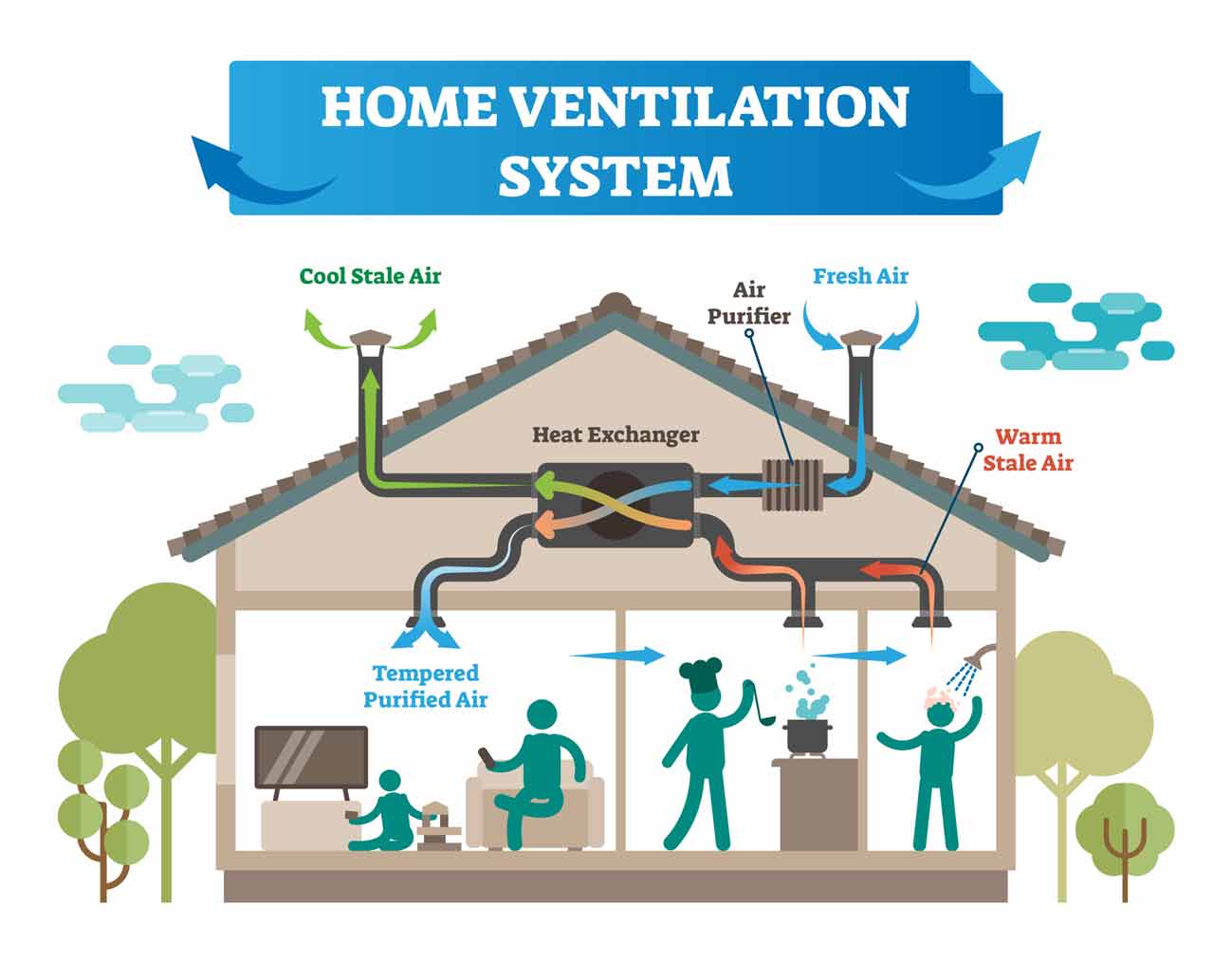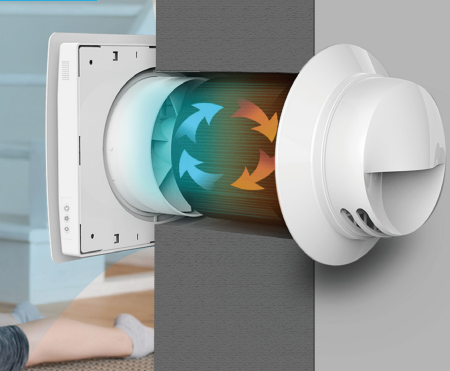The Ultimate Guide to HRV Integration in Residential Spaces
Wiki Article
The All-Inclusive Guide to the Uses of Heat Recovery Ventilation in Modern Structures
Heat Recovery Ventilation (HRV) systems represent a significant innovation in developing technology (HRV Heat Recovery Ventilation). They give a technique for exchanging stagnant indoor air with fresh exterior air while reducing power loss. This method not just improves interior air high quality however likewise adds to power effectiveness in both domestic and business buildings. Comprehending the various applications and advantages of HRV can expose its crucial function in modern style and sustainability initiatives. The implications of this modern technology are worth checking out betterComprehending Heat Recovery Ventilation Solutions

Although many contemporary structures focus on energy efficiency, comprehending warmth recovery ventilation (HRV) systems is essential for enhancing interior air quality and reducing energy usage. HRV systems function by transferring warm from stale indoor air to incoming fresh air, successfully keeping comfy interior temperatures while reducing energy loss. These systems contain a heat exchanger, followers, and ductwork that help with the flow of air. Throughout winter season, HRV devices capture and reuse warm from the outbound air, while in summer season, they can assist cool incoming air. By continuously trading air, HRV systems likewise lower moisture and the concentration of interior toxins. Appropriate installation and upkeep of HRV systems are essential for their efficiency and effectiveness in improving general building performance and comfort.
Benefits of Heat Recovery Ventilation
Heat recovery ventilation systems offer numerous benefits that improve both energy effectiveness and indoor air top quality in modern-day structures. By capturing and reusing power from exhaust air, these systems significantly lower home heating and cooling costs, bring about lower energy intake. Additionally, they maintain a stable flow of fresh exterior air, lessening the risk of indoor air toxins and allergens. This constant exchange aids control humidity levels, preventing mold and mildew growth and guaranteeing a much healthier living atmosphere. In addition, HRV systems contribute to sustainability objectives by reducing total carbon footprints. Their capacity to enhance air flow without sacrificing thermal convenience makes them an important enhancement to contemporary building layout, promoting both economic and eco-friendly benefits.Applications of HRV in Residential Structures
As homeowners significantly prioritize energy effectiveness and interior air quality, the applications of heat healing ventilation (HRV) systems in household buildings have actually come to be much more prevalent. HRV systems are specifically advantageous in tightly secured homes, where preserving fresh air blood circulation is essential for preventing dampness buildup and indoor toxins. They effectively transfer warmth from outward bound stagnant air to inbound fresh air, reducing power prices related to heating & cooling. Furthermore, HRVs can enhance comfort levels by managing moisture and temperature level. They are likewise adaptable for various residential styles, consisting of single-family homes and multi-unit buildings. Generally, incorporating HRV systems sustains lasting living techniques while guaranteeing a much healthier interior atmosphere for passengers.HRV in Industrial and Industrial Settings
In commercial and industrial settings, the application of warm healing air flow (HRV) systems has actually ended up being significantly crucial for optimizing energy efficiency and maintaining air top quality. These systems efficiently transfer heat from exhaust air to inbound fresh air, lowering the requirement for additional heating or air conditioning. This not only reduces energy expenses however additionally adds to sustainability efforts. Industries such as manufacturing, warehousing, and workplace structures profit greatly from HRV systems, as they assist regulate temperature and moisture levels, guaranteeing a comfortable and productive atmosphere. HRV systems help in removing pollutants and excess wetness, boosting interior air top quality. As guidelines around air quality end up being more stringent, the adoption of HRV technology is most likely to grow, making it an essential element of modern business and commercial infrastructure.Future Fads in Heat Recovery Ventilation Technology

Regularly Asked Inquiries
Exactly How Does Heat Recovery Ventilation Impact Indoor Air Top Quality?
Heat recovery ventilation significantly boosts interior air quality by continuously exchanging stagnant indoor air with fresh outside air while recuperating energy. This procedure lowers toxins, preserves optimal humidity levels, and assures a much healthier atmosphere for residents.Can HRV Systems Be Installed in Existing Buildings?
HRV systems can indeed be mounted Source in existing structures. Retrofitting might need adjustments to ductwork and ventilation formats, however it significantly enhances power effectiveness and indoor air quality, making it a sensible choice for older structures.What Maintenance Is Needed for HRV Solutions?

get redirected here
Exist Details Climates Where HRV Is A Lot More Reliable?
Heat recovery ventilation systems are particularly efficient in environments with considerable temperature level distinctions in between periods. These systems maximize power performance by recovering warmth from exhaust air, making them ideal for both cold and reasonably warm environments.How Do HRV Equipments Affect Energy Costs?

Report this wiki page